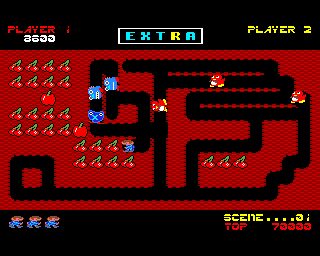Emerald Mine II, released in 1990 for the Amiga by Kingsoft, is the direct sequel to one of the most beloved puzzle games on the Commodore platform. The series, originally designed by Volker Wertich (who would later go on to create The Settlers), draws inspiration from classics like Boulder Dash, but manages to carve out its own identity thanks to highly varied level design and a very active fan community.
The core concept remains simple: guide your miner through intricate underground mazes, collect a required number of emeralds, and avoid deadly traps like falling boulders, aggressive insects, corrosive acids, and other environmental hazards. All of this under constant time pressure. While the original Emerald Mine already offered a compelling challenge, Emerald Mine II significantly raises the bar.
The main strength of Emerald Mine II isn’t a new graphics engine (which remains largely unchanged from the first game), but rather the sheer number of new levels included: over 1,000, many of which were created by fans and later officially compiled by the developers. This makes the game virtually endless, with a constant stream of fresh puzzles and creative scenarios. The level design ranges from straightforward to downright mind-bending, requiring a mix of planning, memory, and quick reflexes.
Graphically, the game remains modest but effective, with clearly defined sprites and excellent visual clarity. The audio is minimal, contributing to the concentrated and often claustrophobic atmosphere of the mines. The object physics—particularly the behavior of falling rocks and chain reactions—are consistent and form a central pillar of the gameplay.
One of the standout features is the cooperative two-player mode, a relatively rare option at the time, which adds a strategic layer and allows for creative solutions to the more difficult stages.
Emerald Mine II is a textbook example of how to create a sequel not by reinventing the wheel, but by intelligently expanding the content and embracing community contributions. It's still fondly remembered by fans of puzzle games on the Amiga and remains a shining example of European logic game design from the early 1990s.













